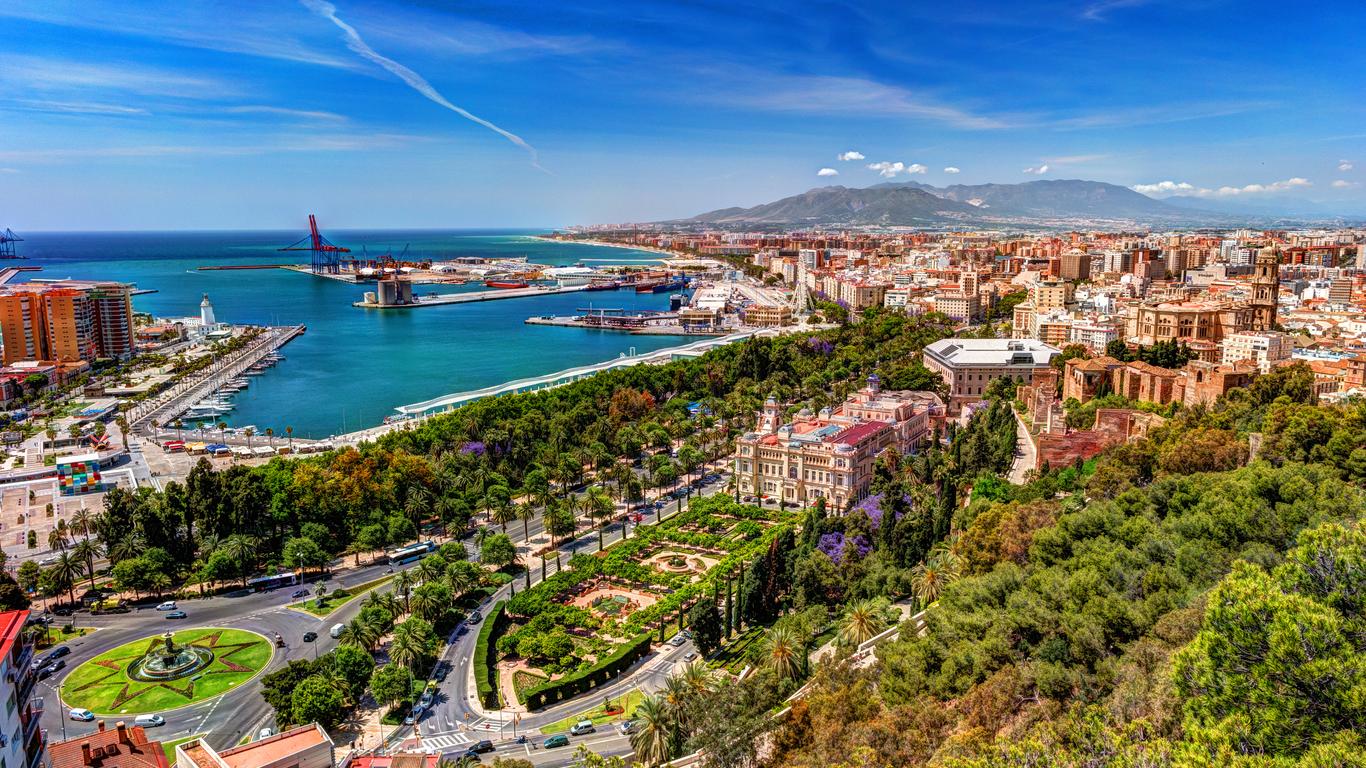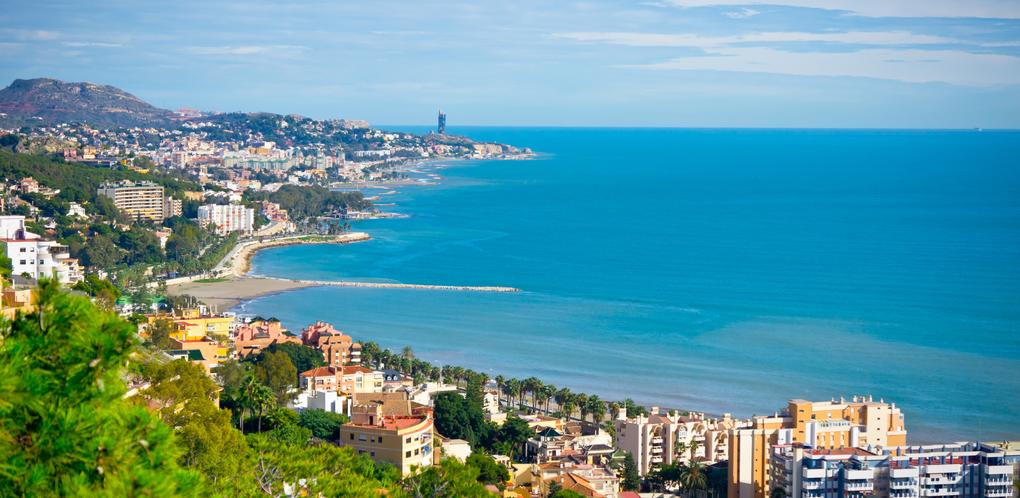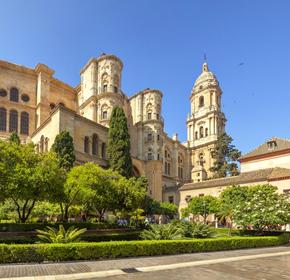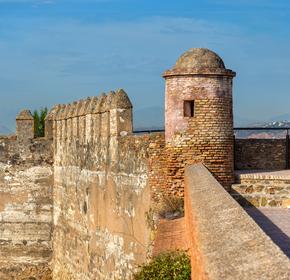1. Alcazaba de Málaga: Go Back to Ancient Times
The Andalucian region has seen many conquering groups over its time as an important Naval gateway. Visit the famous palace fortification dating back to the 11th century situated on top of a hill overlooking the city center of Malaga. The citadel was constructed by ancient Arab residents and is the best preserved alcazaba in all of Spain. Here you can peruse well-designed Gardens and see elaborate fountains while learning about the ancient Siege of Malaga in 1487. It is also well situated to visit other city center attractions including The Malaga Cathedral, the Castillo de Gibralfaro and the Picasso Museum.
2. Catedral de Málaga: Yet another unfinished masterpiece!
It seems like Spain is all about unfinished Cathedrals -- from Barcelona's La Sagrada Familia to Granada's Alhambra, every city you visit seems to have one. Malaga is no different, with only one of the two originally designed towers making it to construction thus earning the nickname "the one-armed woman." The exterior of the building was designed using elements of both Gothic and Baroque styles. Inside, the ornate carvings, paintings and exquisite choir halls beg visitors to take a seat among the pews and marvel at their splendor. The Cathedral remains a functioning Roman Catholic church where visitors can listen to organ performances and receive weekly communion.
3. Castillo de Gibralfaro: For History Buffs and Beautiful Views
Located just up the hill from the Alcazaba, the Castillo de Gibralfaro is a former military base used by Arab inhabitants to protect themselves against invasion. There are many ways to reach the summit, but we suggest taking the scenic route via Paseo Don Juan de Temboury, which winds through lush gardens and has many viewpoints overlooking the city. The most impressive part when visiting is surely the sprawling ramparts, which date back to the 10th century and are divided into two sections within the compound. The Interpretation Center can provide visitors with further information about the Arabic influences seen recognized in Spain's architecture and culture, especially in the Andalusian region.
4. Teatro Romano de Málaga: Enjoy an open-air performance
It may not be the Colosseum, but the Roman Theater of Malaga sure does put on a good show! The giant amphitheater was created to honor Augustus Ceaser in 1 A.D. and is the oldest monument in the city of Malaga. After being rediscovered in the 1950s, the historic structure has undergone extensive renovation in order to preserve the city's ancient history. With enough room to seat up to 220 people, the Roman Theater today regularly draws in thousands of visitors who flock there to indulge in the many summer open-air concerts and performances.
5. Jardín Botánico-Histórico La Concepción: Appreciate nature from around the world
Malaga's Mediterranean climate makes it the perfect place to discover the tropical and subtropical species of plants that call Andalusia home. Some of the most popular exhibitions at the Historic Botanical Garden include the rock garden of biodiversity, the fruit tree collection and the aquatic plant collection. There is also an imaginary 'around the world in 80 trees' tour in which you can see plants, trees and bushes from five different continents on display.
6. Mosque–Cathedral of Córdoba: Blending Catholic and Muslim Theologies
Built in 1523, the Mosque-Cathedral of Córdoba was once the meeting place for Córdoba's most powerful. The cathedral was erected in the center of a mosque and mahogany choir stalls carved with scenes from the Bible were embedded. Visit the choir stalls and take in their beauty. You'll be amazed by the diverse architecture made from Islamic, Gothic, and Moorish themes. Stroll over to the Mezquita flanked alongside one of marble columns that support the church. Housed throughout the mosque-cathedral are a myriad of entrances and chapels. Visit the Parroquia del Sagrario Chapel and admire its three naves or venture the cathedral's western halls and admire the Holy Supper by Juan de Ortuño. This breathtaking painting is located at the altarpiece of the Chapel of Santa Ana. Alongside the Holy Supper you'll see five elaborate oil canvases by Pablo de Céspedes.
7. Alhambra: Palace of Flowers
A palace, fortress and citadel in one, this sprawling complex has overlooked Granada for centuries and continues to be one of the greatest historical wonders in the world. Exceptional carvings and tile work cover every inch of wall and ceiling, while courtyards with water features open up to sunny skies. Surrounding these rooms of royalty are equally spectacular gardens, the placement of flowers perfectly in tune with the architecture.
8. Alcázar de los Reyes Cristianos: Site of the Courts of the Holy Offices
Adjacent to the Guadalquivir river sits the Alcazar castle, once the home of King Fernando and Isabella. As you walk through the palace, visit the room where Christopher Columbus proposed his intention to reach India by sailing via a western route. Stroll to the downstairs gallery where Moorish, Catholic, and Roman artifacts are displayed and admire their cultural diversity. If you love heights, climb Torre de Los Leones and take in an aerial view of Córdoba's pictorial countryside. After a tour of the castle, relax by the Moorish styled gardens and admire the Arabic-influenced architecture.








